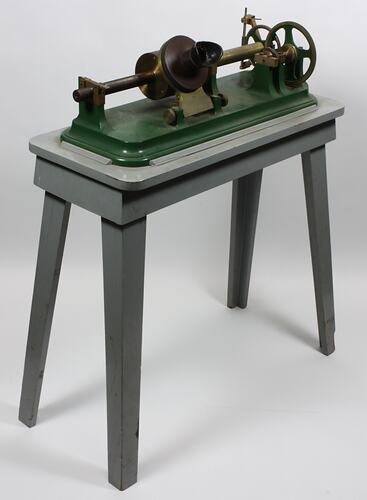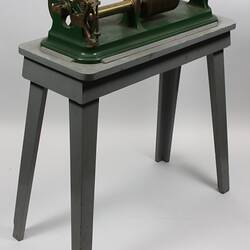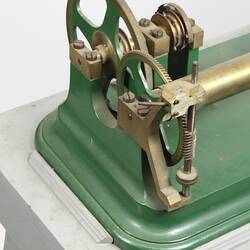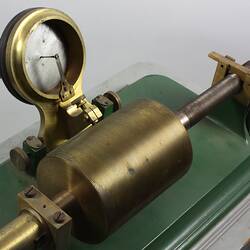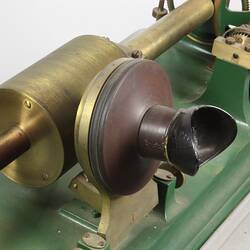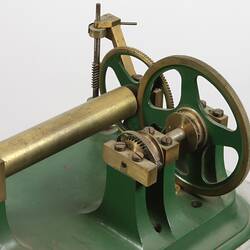Summary
Model of an Edison type weight driven phonograph.
This model of an early Edison phonograph was made by Edward Howson while employed by the Australasian Electric Light Power and Storage Company. The date of its construction is not known but it was before 1887, when Edward was appointed to the Department of Postmaster-General, Victoria.
The phonograph was invented in 1877 by Thomas Edison for the recording and reproduction of sound recordings. The sound was stored in the surface of a long groove pressed into a sheet of tin foil wrapped around a cylinder, that could be rotated. A groove was like a canyon with "hills and dales". These 'hills and dales' were created in the surface when a vbrating needle ran along the groove in the tin foil; the needle vibrated in sync with a diaphragm caused to rotate by sound waves To play back a recording, the cylinder is rotated and a needle runs along the hills and dales in the groove, causing a diaphragm (attached to the needle) to vibrate, reproducing the sounds. Edison's first phonograph recorded sounds on a tinfoil sheet wrapped round a cylinder. The cylinder had a single groove spiralling around its surface. The tinfoil was 'grooved' when it was pressed onto the cylinder surface.
Physical Description
Endless chain passes over pulley with ratchet and click. Driving weight carried in a loose pulley in a loop. Two diaphragms, one for recording, other for reproducing. Mounted on small table.
More Information
-
Collecting Areas
-
Acquisition Information
Donation from Mrs E. S. Howson, 12 Mar 1945
-
Past Owner
Mr Edward Slee Howson, Melbourne, Greater Melbourne, Victoria, Australia, circa 1887
Whilst employed by the Australasian Electric Light Power & Storage Co (Ltd), Melbourne. -
Classification
Communications, Audio-visual technology, Playback & recording
-
Category
-
Discipline
-
Type of item
-
Overall Dimensions
750 mm (Width), 340 mm (Depth), 970 mm (Height)
Width and depth of table top only. Width (at base of legs, maximum dimension): 820mm. Depth (at base of legs, maximum dimension): 370mm
-
References
Phonograph. Accessed 13 May 2014. [Link 1]
-
Keywords
